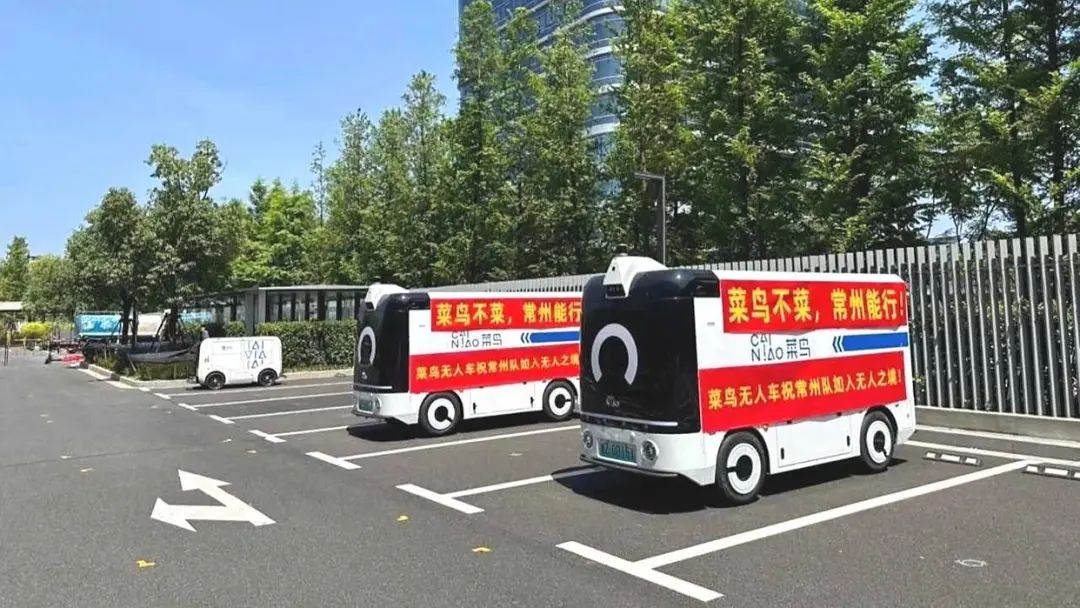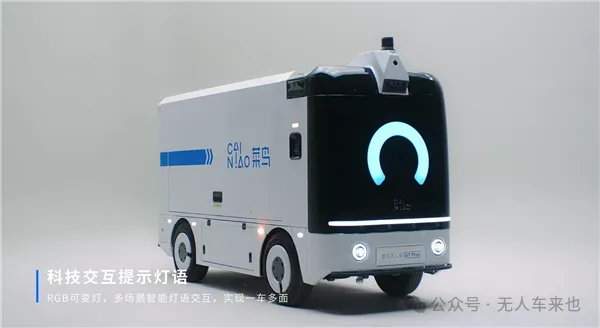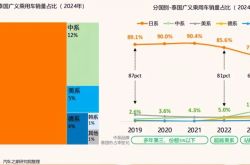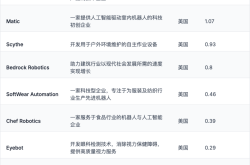STO Express and Cainiao Revolutionize Logistics: 2,000 Driverless Vehicles to Slash Labor Costs by 50%
![]() 07/10 2025
07/10 2025
![]() 686
686
Introduction
On July 8, STO Express and Cainiao made a groundbreaking move by signing a strategic cooperation agreement on driverless vehicles. The goal: to deploy 2,000 driverless vehicles across their networks within the year.
With the ever-decreasing fees for last-mile deliveries and rising labor costs, STO Express sees driverless vehicles as a "cost-cutting tool" poised to make waves in the fiercely competitive express delivery industry.
Remarkably, Cainiao's GT-Lite driverless vehicle, priced at just 16,800 yuan, shares the same platform as its high-end counterpart, offering an uncompromising autonomous driving system.
At this price point, it's cheaper than many electric bikes yet can carry 7 cubic meters of cargo and travel 100 kilometers. It starts working at 5 am, outperforming even the most diligent delivery personnel.
Let's delve into this revolution with Driverless Vehicles Incoming!
One: 2,000 Driverless Vehicles on the Road: A Practical Solution for Cost Savings
STO Express is committed to pioneering the driverless vehicle sector.
Currently, they have piloted driverless deliveries in over 100 cities across 25 provinces. Their collaboration with Cainiao aims to boost the number of driverless vehicles for last-mile deliveries to 2,000 across the network within the year.
What does this figure signify?
It translates to an average of 20 driverless vehicles operating in each pilot city, effectively handling outlet-to-post station connections and branch line transportation.
Cainiao's GT-Lite driverless vehicle caught STO Express's eye due to its "affordable yet powerful" nature.
At 16,800 yuan, it transforms driverless vehicles from luxury items into a necessity for outlets.
Previously, driverless vehicles often cost hundreds of thousands of yuan, deterring outlets from adopting them. Now, outlets can save up and purchase one or two.
Moreover, this vehicle is not a stripped-down version; it's produced on the same platform as the high-end GT-Pro, with an identical autonomous driving system, even equipped with Cainiao's self-developed light map technology. While other driverless vehicles spend months collecting maps, this one can start operating immediately upon deployment, generating benefits on the same day.
Its specifications are also impressive:
A 7-cubic-meter cargo box can accommodate over 300 standard express delivery boxes, equivalent to the delivery volume of three delivery personnel in one trip.
A load capacity of 600 kilograms, easily handling large appliances.
A speed of 45 km/h, significantly faster than electric bikes.
A full load range of 100 kilometers, ample to cover the delivery area of a district or county.
The outlet manager at Nanjing Jiangning University Town calculated that the 21 driverless vehicles they deployed saved 150,000 yuan in transportation costs in one year, with a cumulative safe travel distance of 120,000 kilometers, far surpassing the reliability of manual labor.
Two: Starting at 5 AM, Labor Costs Reduced by 50%: A Game-Changer for Delivery Personnel?
At the Nanyuan outlet in Hangzhou's Linping District, driverless vehicles have long been the "mainstay".
Every day at 5 am, before dawn, four driverless vehicles depart from the outlet and travel along fixed routes to five post stations, starting an hour earlier than delivery personnel.
By the time delivery personnel start work, these driverless vehicles have already completed their first trip and embarked on their second.
The outlet manager couldn't contain his excitement:
"Don't underestimate this one-hour head start; it's crucial! In the past, delivery personnel only started delivering at 7 am, and with a surge in orders, they couldn't finish by noon. Now, with driverless vehicles, most of the cargo can be delivered to post stations in the morning, significantly reducing afternoon pressure."
More importantly, it saves money. Their outlet handles tens of thousands of orders daily, with driverless vehicles handling nearly 3,000 of them, directly reducing labor costs by 50%.
"Saving 10 cents per order means 300 yuan a day, over 10,000 yuan a month, enough to provide numerous benefits to outlet employees."
These driverless vehicles can not only deliver but also pick up packages on the way back.
When returning from post stations, they collect packages from individual customers and take them back to the outlet for shipping, accomplishing two tasks in one trip, maximizing efficiency.

Moreover, they can make 12 trips a day, with a round trip and loading/unloading time of only one hour, improving delivery timeliness by 20%.
Previously, delivery personnel took one and a half hours for one trip, but now driverless vehicles can finish in one hour without needing a break, operating in a "perpetual motion" mode.
Xiao Zhang, a delivery personnel, used to make five round trips a day, leaving him sore and tired. Now, with driverless vehicles, he only needs to be responsible for the "last 100 meters" from post stations to customers' homes, reducing labor intensity by 20% without affecting his income.
The outlet manager said, "I used to worry about not being able to recruit personnel, but now that young people see it's not so tiring, they are willing to give it a try."
Three: The "Deep Waters of Digitization" in the Express Delivery Industry: Driverless Vehicles as a New Beginning
STO Express and Cainiao's move is a microcosm of the digital and intelligent transformation sweeping the express delivery industry.
In recent years, automated sorting and smart logistics have become highly proficient in the front-end and mid-end, and now it's the turn of the challenging last-mile delivery.
Data shows that sales of low-speed autonomous driving vehicles in China will exceed 47,000 units in 2025, with sales revenue reaching 18.5 billion yuan, and are expected to surpass 41 billion yuan by 2030.
Policies, capital, and the market are all converging in this sector, transforming driverless vehicles from a "pilot project" to a "rigid demand".
For express delivery enterprises, last-mile costs account for a significant portion, plagued by high labor costs, recruitment difficulties, and complex management. If these pain points are not addressed, they risk being eliminated by the industry.
Wang Wenbin, President of STO Express, stated bluntly: "Digital and intelligent transformation is not an option but a necessity."
Their large-scale deployment of driverless vehicles aims not only to save money but also to establish a three-tier intelligent delivery system of "branch lines + last mile + emergency response".
Just like the outlet at Nanjing Jiangning University Town, the 21 driverless vehicles each have specific responsibilities, some handling the special line from outlets to post stations, others managing last-mile deliveries within campuses. In case of emergencies, they can also provide support, making the entire delivery network flexible and efficient.
Cainiao is no stranger to the driverless vehicle sector; their vehicles have obtained road rights in over 200 cities and more than 500 districts and counties across the country, cumulatively completing over 60 million delivery tasks.
This collaboration with STO Express combines their technical capabilities with outlet resources, enabling faster deployment and better performance of driverless vehicles.
For example, Cainiao's light map technology allows driverless vehicles to skip the map collection process, enabling deployment on the same day of purchase. This is crucial for the efficiency-driven express delivery industry.
Four: Conclusion: The Future of Delivery Personnel as "Robot Commanders"
Some fear that the proliferation of driverless vehicles will lead to job losses for delivery personnel.
However, based on pilot projects, it's more likely to be a scenario of "human-machine collaboration" – driverless vehicles handling repetitive connections and transportation, while delivery personnel focus on more personalized door-to-door services and problem resolution.
Like delivery personnel at the Nanyuan outlet, who used to be too tired to communicate with customers, now they have free time to better address customer complaints and needs, thereby enhancing service quality.
2,000 driverless vehicles are just the beginning. As technology matures and costs decrease, more driverless vehicles may soon navigate streets and alleys.

They won't replace anyone but redefine the working methods of last-mile express delivery services – letting machines do what they do best, and humans do what they do best.
This collaboration between STO Express and Cainiao has paved the way for the entire industry: Digitization is not a distant dream but a tangible tool to save money and improve efficiency.
In short, Driverless Vehicles Incoming (public account: Driverless Vehicles Incoming) believes:
China's express delivery industry once relied on the sweat of millions of delivery personnel to achieve the world miracle of handling over 700 million packages daily. Nowadays, as driverless vehicles quietly navigate the streets at dawn, a new era of efficiency is dawning – leveraging silicon-based intelligence to continue and surpass the limits of carbon-based life.
When you receive a package delivered by a driverless vehicle late at night, remember this ongoing transformation.
What do you think?








